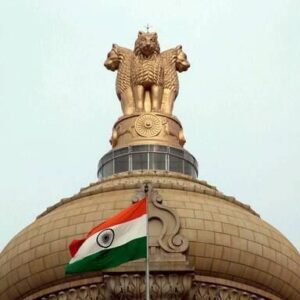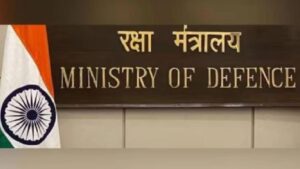Raipur, November 11, 2024: A mechanically stable, biodegradable, hydrophobic nanocoating material can enhance the nutrient use efficiency of chemical fertilizers by tuning them for slow release, thereby limiting their interaction with the rhizosphere soil, water and microbes.
This coating made of nanoclay-reinforced binary carbohydrates can reduce the recommended fertiliser dose and maintaining enhanced crop production, Union Ministry of Science & Technology sources said today.
Since last 50 years as a part of the green revolution, frequent chemical fertilizer input practices have been used to maintain soil nutrient such that higher plant productivity can be achieved.
The frequent and excessive application, pose risk on global sustainable development.
Researchers are constantly on the lookout for ways to use fertilisers more efficiently.
Scientists from Institute of Nano Science and Technology (INST), Mohali, an autonomous institution of Department of Science and Technology, coated muriate of potash (KCl), which serves 80 per cent of potassium fertilizer needs, with binary carbohydrates, namely, chitosan and lignin using anionic clay as a reinforcement agent that favours stable coordination bonds, the sources said.
B. K. Sahu, K. Swami, N. Kapoor, A. Agrawal, S. Kataria, P. Sharma, P. Kundu, H. Thangavel, A. Vattakkuniyil, O. P. Chaurasia and V. Shanmugam used drum rotor method to coat the fertilizer in a uniform manner and improve the use efficiency, they added.
The nanomaterial used for the uniform coating were nature derived low-cost material like the nano-clay, chitosan and starch and so on.

The research has been published in the journal Environmental Science: Nano.
Tuning the hydrophobicity of nano coating material, switched the release kinetics of the chemical fertilizers as per crop requirement. Additionally, the biodegradability and life cycle assessment of the developed product ensured the sustainability over conventional chemical fertilizers.
Further, the mechanical performance of the coated fertilizer guarantees its industrial application during transportation and supply chain.
The 3D nanostructure of nature inspired polymers offers a potential platform for various applications with the advantage of its biocompatibility and biodegradability. The properties of natural waste polymer like irreversible denaturation, self-assembled amyloid fibril formation and thermos-responsiveness were exploited for assembling of hydrophobic nanomaterial for the slow release of the chemical fertilizers.
Further, the customized rotary drum system with sand air gun enabled the uniform coating of chemical fertilizers with an excellent mechanical performance.
The slow-release fertilizer can be the potential alternative over the conventional fertilizer to enhance the nutrient use efficiency. The reduced recommended dose with increased yield of rice and wheat facilitates more output from lesser input. Overall, the socio-economic condition of the farmer and the economy of the country will improve as compared to conventional fertilizer applications, the sources said.
More Stories
Election Commission Reviews Bihar Poll preparedness
Election Commission of India, led by Chief Election Commissioner (CEC) Gyanesh Kumar, today reviewed the law-and order arrangements in poll bound Bihar and its neighbouring States.
Nationwide Launch of First-of-Its-Kind ‘Model Youth Gram Sabha’ Initiative tomorrow
The Centre will launch nationwide first of its kind initiative across more than 1,000 schools of the Model Youth Gram Sabha (MYGS) from tomorrow.
President Murmu Takes Sortie in Rafale Aircraft
President of India Droupadi Murmu today took a sortie in a Rafale aircraft at Air Force Station, Ambala in Haryana.
October 31 Last Date for Registration on Agristack Portal
To sell paddy this year in Chhattisgarh, farmers are required to register on the Agristack Portal by October 31, 2025.
Chhattisgarh to Undergo Intensive Revision (SIR) of Voter Lists
The Election Commission of India has announced the dates for the Special Intensive Revision (SIR) of voter lists in 12 states, including Chhattisgarh.
Birth and Death Certificates in Chhattisgarh Now Completely Online
Chhattisgarh Government has made it mandatory for issuance of every birth and death certificate online in the state.


